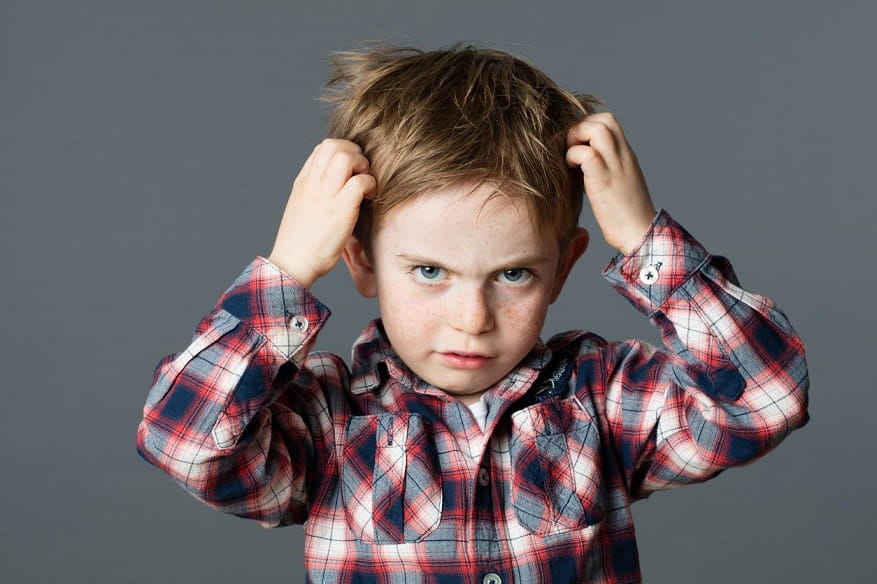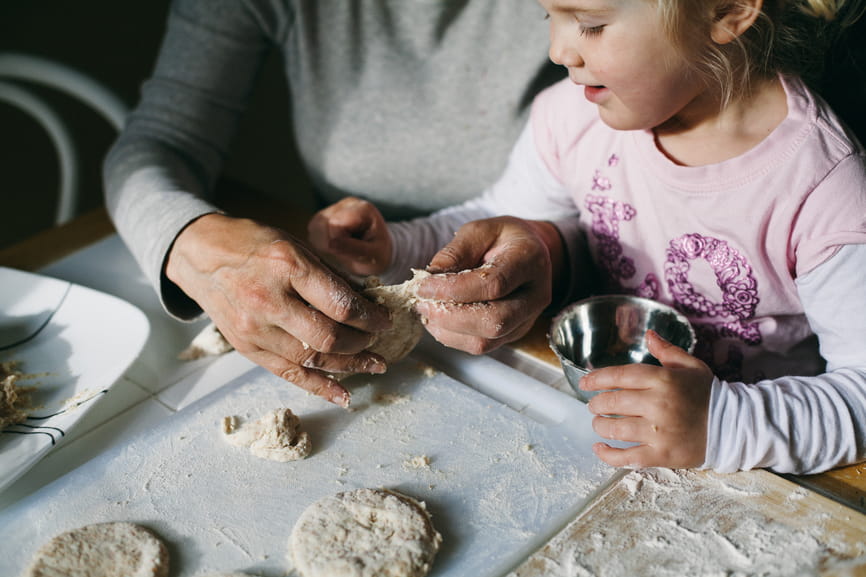Buggin’ Out? 10 Myths and Truths about Lice

You’re combing out your daughter’s hair when you see them: those telltale white and yellow specks near her scalp on her hair follicles. Yup, it’s lice, and they’ve set up shop on your preschooler’s cranium.
Alright, it’s true: No one likes lice. But before you don a hazmat suit and start scrubbing down every nook and cranny of your house, let us put your, ahem, head at ease. Lice are not as bad as you think, and the Internet is full of lice falsehoods that would make your eyes bug out.
For explaining lice to your kids, we recommend the adorable (yeas, really) lice book Bugs in My Hair. And from the experts at the Center for Disease Control, here’s the truth (and the myths) about the little freeloaders driving your munchkin buggy.
1. Lice can jump and fly, so they’re extremely contagious.
Verdict: MYTH.
Lice can only travel by crawling, so it’s usually easy enough to avoid catching them by keeping your distance from someone who’s got ‘em.
2. Head lice carry disease.
Verdict: MYTH.
Annoying? Yes. Gross? Perhaps. But no, they don’t carry diseases, so no need to worry about catching the plague!
3. Only one family member has lice, so the rest of us don’t necessarily need treatment.
Verdict: TRUTH.
Everybody in a household should definitely be checked for lice to ensure they don’t have them—but unless they show evidence of an infestation, no treatment is needed.
4. You can get lice from sharing personal items like hairbrushes or clothing.
Verdict: TRUTH.
With a caveat: It’s far more common to get lice through direct head-to-head contact with someone who has them. These teeny critters just don’t survive long without feeding (a day or two at most), so it’s rare for them to abandon a warm scalp in favor of a cold hairbrush or hat. Still, nits (eggs) can occasionally fall out of the hair onto those items and then hatch later—so it’s still a good idea to avoid sharing these items, just in case.
5. I need to spray pesticide in my house to get rid of lice.
Verdict: MYTH.
While you should definitely do some basic cleanup, (think vacuuming the couch and bedroom and machine-washing bedsheets, pillow cases, clothes, etc.), there’s no need to get out the bug bombs—remember, the survival rate for a louse without a host is two days or less.
6. Dogs and cats can carry head lice.
Verdict: MYTH.
Luckily, these pests don’t prefer our furry companions as hosts—so don’t worry about Rover or Mr. Fluffums getting in on the itchy “fun.”
7. If my child’s head isn’t itchy, he doesn’t have lice.
Verdict: MYTH.
The itching isn’t caused by the bites themselves: It’s actually an allergic reaction to the bites, and it can take four to six weeks after the reaction begins before the itching starts. However, some people don’t itch at all. Other symptoms that will let you know if your child has lice is if he complains of feeling something crawling on or tickling his scalp, if he’s more irritable and restless (due to that constant crawling or ticklish feeling), and, of course, spotting those white and yellow specks in his hair or on his scalp.
8. There are “super lice” out there that are resistant to many of the available treatments.
Verdict: TRUTH.
While it’s true that there’s been a growing number of these cases, the current advice is to start off with an over-the-counter treatment—if that doesn’t work, you can talk to your doctor about a stronger prescription. Fair warning, though: Many treatments do contain chemicals. If you and your family don’t want to use chemicals, then you may be in luck. Across the country, businesses such as Lice Knowing You in the Northwest or The Lice Place in Texas and Alabama carefully and methodically pick out each louse and nit sans chemicals. They can be pricey, but most have a salon-like atmosphere—and most guarantee their work, relieving you of the nit-picking duties.
*Looking for more detailed info on lice treatments? Check out this handy guide from the American Academy of Pediatrics.
9. I should seal up all my child’s stuffed animals in a plastic bag for two weeks to make sure any lice are dead.
Verdict: MYTH.
There’s no reason for your kiddo to go without her favorite bear for two whole weeks. According to the CDC, “lice and eggs are killed by exposure for five minutes to temperatures greater than 53.5°C (128.3°F)." That means one hot wash will do the trick. You can also throw items in the dryer—or the freezer—for four hours.
10. If my school reports that another child has a case of lice, I should keep my child home.
Verdict: MYTH.
If your school reports a case of lice, make sure you know how to check your child’s hair. (It’s easiest to do with a fine-toothed, metal nit comb, which helps get closer to the scalp for a better view and generally makes the process much faster.) Worried you’ll mistake a nit for dandruff? Check out images and learn about the differences between the two here.
If you find no evidence of nits or bugs, you’re a-ok, but you may wish to put your child’s hair up for a few days, just to be safe!




